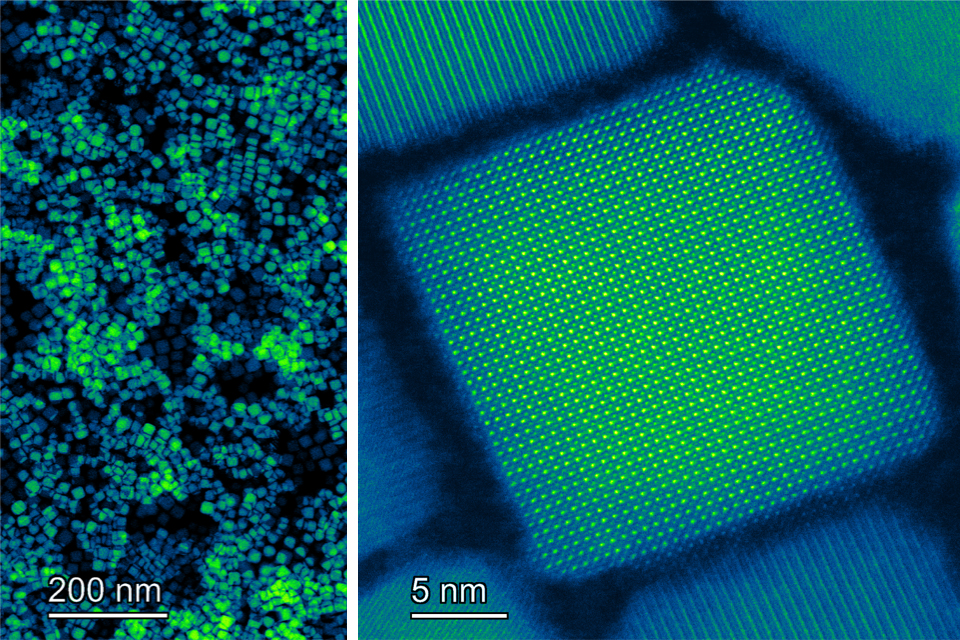- Bell State
- Posts
- Teleportation, Magnets, and Superconductors
Teleportation, Magnets, and Superconductors
Quantum Intelligence 🤖
Welcome to The Bell State.

Your weekly roundup of the biggest breakthroughs in Quantum Computing.
Introducing Bell Boy:
Our friendly expert on all things Quantum.

MIT Develops Quantum Light Source for Optical Quantum Computing
Bell Boy Breakdown: Scientists at MIT have made a new kind of light that is very special. It’s called quantum light because of some unique properties that other light doesn’t have. For example, each photon of quantum light is identical to every other photon - they all have the same energy, polarization, and direction of travel. This makes quantum light extremely useful for quantum computers and other devices that rely on the properties of light.
The scientists made quantum light using a new material called lead-halide perovskite nanoparticles. The nanoparticles are very small, about 100 nanometers in diameter (about 100,000 times smaller than the width of a human hair!). When the nanoparticles are excited, they emit a stream of single photons all traveling in the same direction and identical to each other.
This new source of quantum light is a significant breakthrough. It could help us understand the fundamental properties of light, and lead to new and improved quantum computers and devices that use light.
Quantum Leaps Forward with Magnetic Twist at UDub
Bell Boy Breakdown: University of Washington scientists have found a way to create stable qubits, which are the basic units of information in a quantum computer. Qubits are made of anyons, which are strange particles that can exist in two places at once. Anyons are very difficult to create and control, but the researchers at UDub have found a way to do it using an artificial lattice.
A lattice is an arrangement of dots, and each of those dots represents a qubit. The arrangement of the qubits determines how they will interact with each other. The lattice made at UDub is made up of tiny wires that are arranged in a specific pattern. When the wires are cooled to very low temperatures, they create a state called a fractional quantum anomalous Hall (FQAH) state. This state can host anyons, and the researchers were able to observe the anyons interacting with each other.
This is a major step forward in the development of fault-tolerant qubits, which are essential for building a large-scale quantum computer.
Quantum Korea 2023 Showcases Cutting-Edge Quantum Tech
Bell Boy Breakdown: A big quantum tech event recently happened in Seoul, Korea. It was hosted by the Ministry of Science and ICT, attracted renowned quantum scholars, and featured over 50 exhibitors.
Companies like IonQ and IBM showed their technologies with IonQ showing their Forte ion-trap quantum computer, and IBM their 43-qubit superconducting chip (which is the largest superconducting chip ever created!).
Many research organizations showed their tech as well, including SK Telecom. They showed their Galaxy Quantum phone and encryption chip for enhanced security. Other innovations, such as a 50-qubit quantum computer model, were also presented.
New Superconducting State Holds Promise for Quantum Computing
Bell Boy Breakdown: Scientists at UCC used a powerful microscope to look at a material called uranium ditelluride (UTe2). They found that UTe2 has a special kind of superconducting state called a spatially modulating superconducting state. It is different from other superconducting states because it has a regular pattern of different types of electrons.
This regular pattern could be used to build quantum computers. Quantum computers are computers that use the laws of quantum mechanics to do calculations. They are much faster than regular computers and could be used to solve problems that regular computers cannot.
The discovery is a big step towards building quantum computers, and could lead to new and improved quantum computers that could be used to do things like break encryption codes, design new drugs, and simulate complex systems.



